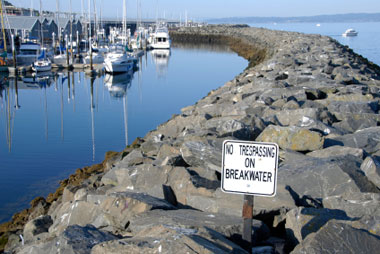Breakwaters Shoreline Protection
Breakwaters can be constructed with one end linked to the shore, in which case they are usually classified as sea walls; otherwise they are positioned offshore from as little as 100 m up to 300–600 m from the original shoreline. There are two main types of offshore breakwater, single and multiple; single as the name suggests means the breakwater consists of one unbroken barrier, which multiple breakwaters (in numbers anywhere from 2-20) are positioned with gaps in between (50–300 m). Length of gap is largely governed by the interacting wavelengths. Breakwaters may be either fixed or floating, and impermeable or permeable to allow sediment transfer shoreward of the structures, the choice depending tidal range and water depth. They usually consist of large pieces of rock (granite) weighing up to 16 tons each, or rubble-mound. Their design is influenced by the angle of wave approach and other environmental parameters. Breakwater construction can be either parallel or perpendicular to the coast, depending on the shoreline requiremen…… (Read More)


